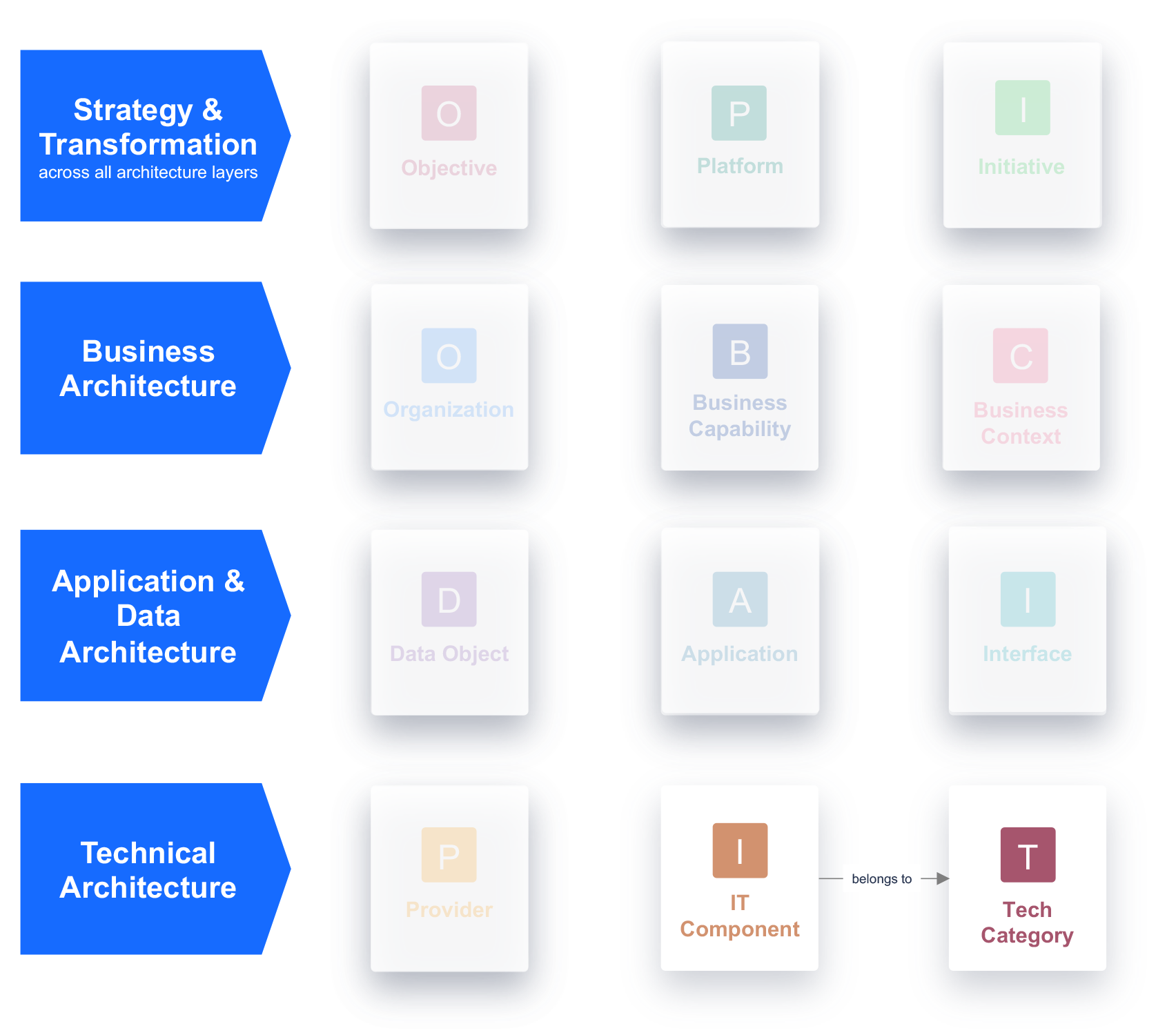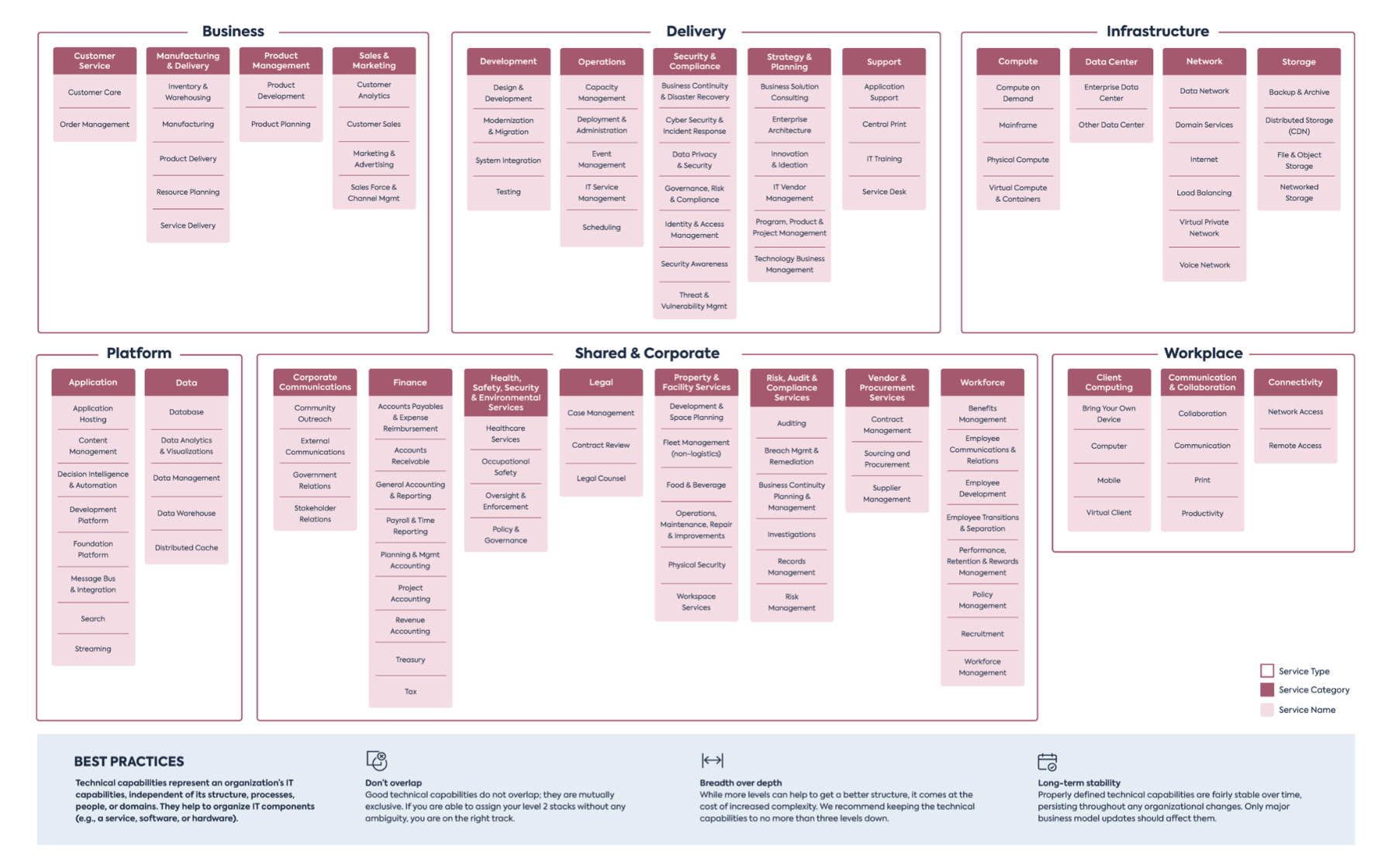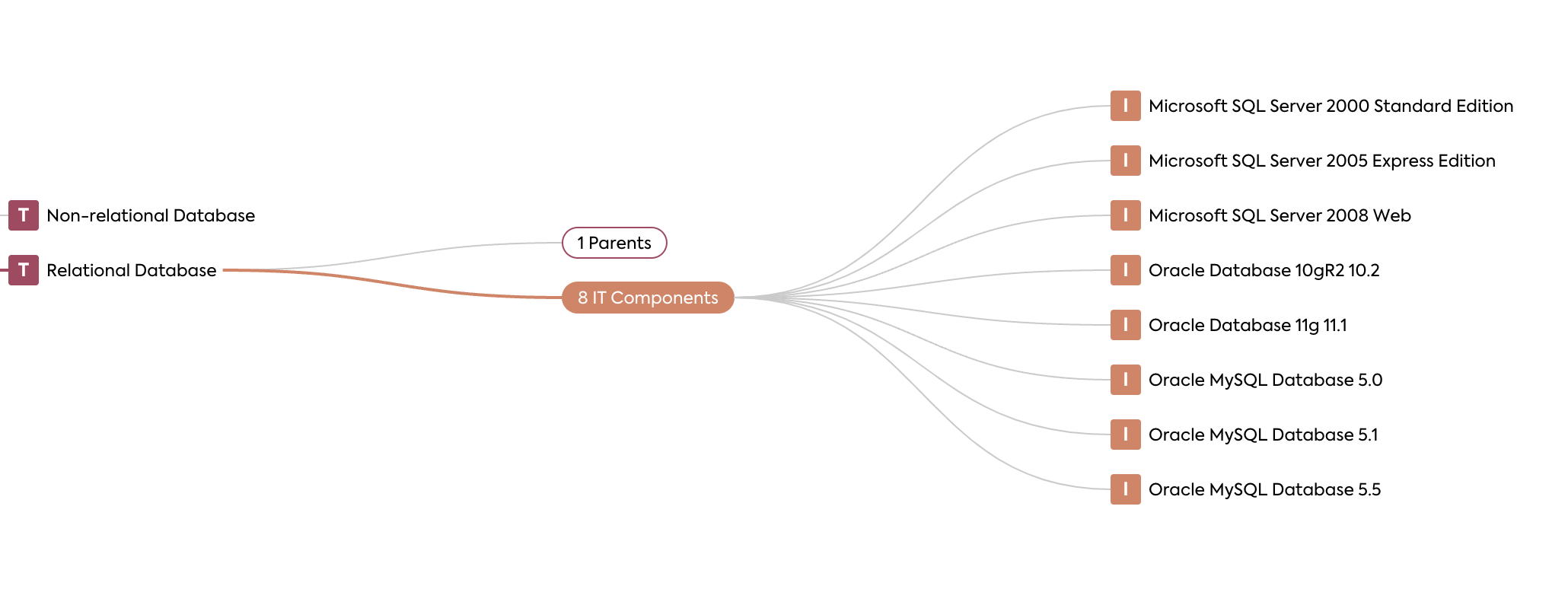Tech Category
These modeling guidelines are for the Meta Model v4. For Meta Model v3 guidelines, see Modeling: Tech Category.
Definition
Tech Categories can be used to group IT Components into standardized technology categories.
Description
Tech Categories allow organizations to create standardized groupings of IT Components in their IT landscape, optionally based on the Technology Business Management (TBM) taxonomy. Examples of Tech Categories are Database, Data Warehouse, or Networked Storage. The Tech Category model is relatively stable over time and independent of specific industries.
The following image shows an overview of all relations to and from Tech Category Fact Sheets:

This systematic approach ensures consistency, alignment with industry best practices, and strategic alignment with organizational goals and initiatives. However, when handling Standards Management, we differentiate between technical capabilities and Tech Categories. While Tech Categories are suitable for cost aggregation, they might not fully capture relevant technical capabilities like "Secrets Management" that are essential for evaluating standards and are better addressed by a different taxonomy like G2.
Tech Category Examples: Computers / Mainframes
The G2 taxonomy is not an open standard like the TBM taxonomy and is not included in the LeanIX Tech Category catalog.
Guidelines and Best Practices
- Breadth before depth: Begin by identifying the various capabilities offered by your organization's technologies. For example, if you work with databases, you may have relational databases, NoSQL databases, and other types of databases.
- Create categories: Once you have identified the technology capabilities, create corresponding categories within the Tech Category feature. These categories will serve as containers to group similar technologies. You can immediately start this by leveraging the Tech Category Catalog and mapping your technology capabilities accordingly.
- Use an IT capability model: Assign each technology to the appropriate category based on its capabilities. This will help maintain a clear and organized view of the technology landscape.
- Don't overlap: Tech Categories should be mutually exclusive and collectively exhaustive (MECE).
Follow these examples on how to leverage the TBM Taxonomy for Tech Categories.

TBM Taxonomy. Click on the image to view it in full resolution.
Example Tech Category: Database
- Tech Category: Relational Database (for example, MySQL)
- Tech Category: NoSQL Database (for example, MongoDB)
- Tech Category: Graph Database (for example, Neo4j)

Here, the Database category groups different types of databases, making it simpler to manage and comprehend the technology inventory.
If using the TBM does not capture all the categories in your organization, for example, for accommodating the Secret Management, you can easily adapt, add, and modify the Tech Categories based on your needs.
Antipatterns
This section addresses antipatterns involving ineffective or counterproductive ways of modeling the Tech Category in LeanIX.
- Don’t confuse Tech Category and IT Components - Tech Category is the grouping of the IT Components.
- Don’t confuse Tech Category and Technical Platform (an optional Platform type in Meta Model v3) - The Tech Category is a logical grouping of technologies of similar functions (for example, all of your databases), while Technical Platform is a technical grouping of IT Components of one type (for example, all of your Oracle databases) in relation to the strategic Initiatives, Business Capabilities, and Objectives.
Applicable Use Cases
- Application Rationalization
- Obsolescence Risk Management as this allows IT Component's obsolescence to be analyzed by Tech Categories.
Insights from Tech Category Fact Sheet
Having the Tech Category in place unlocks various insights, such as IT Component Landscape which you can use for Technology Obsolescence Management.
Further Resources
Updated about 1 month ago
